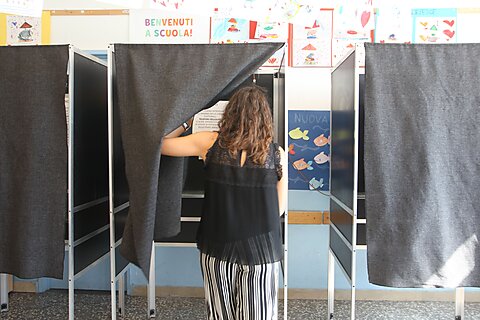Voters will go to the polls soon in states and municipalities to decide ballot issues of significance for individual liberty, limited government, and sound public administration. Some highlights (via Ballotpedia and Bolts):
If Ohio voters approve Issue 2 to legalize and regulate pot sales, more than half the U.S. population will live in states that have legalized recreational marijuana. Issue 1 in the same state would establish a state constitutional right to “make and carry out one’s own reproductive decisions,” including decisions about abortion, contraception, fertility treatment, miscarriage care, and continuing pregnancy, while allowing the state to restrict abortion after fetal viability, except when “necessary to protect the pregnant patient’s life or health.”
Maine Question 3 would create a state utility authorized to take over Maine’s privately owned electric utilities and transmission operations. Sen. Bernie Sanders (I‑VT) and the Sierra Club are among its backers on the left, but even some progressives have doubts and the utility workers’ union outright opposes the takeover. Ironically, one of the state’s two investor‐owned utilities, serving areas in the north and east of the state, is itself owned by Calgary, Alberta’s municipal electric utility.
On public finance, Colorado Proposition HH is being promoted as a reduction in property tax rates but is so drafted as to enable an end run around key provisions of the Colorado Taxpayer Bill of Rights (TABOR), enacted by voters in 1992, which has worked to limit the growth of government. Texas Proposition 3, a constitutional amendment, would prohibit the legislature from enacting a tax on wealth or on net worth in the future. It is one of more than a dozen constitutional amendments on the Texas ballot with fiscal or tax implications. Maine Question 1 would require voter approval of many bond issuances above $1 billion, and was advanced by opponents of Maine Question 3, the above‐mentioned measure authorizing a state takeover of electric utilities, which would presumably be funded by such bond issuances.
Ranked choice voting in municipal elections, an idea I’ve written about favorably, will be on the ballot in three mid‐sized Michigan communities, Kalamazoo, East Lansing, and Royal Oak; the state would still have to give its approval. In Minnetonka, Minn., where voters approved RCV in 2020, opponents of the voting method have placed on the ballot a measure that would reverse that decision. Earlier this year voters in Redondo Beach, Calif., and Burlington, Vt., approved RCV, the latest in a streak of local wins for the method, which is also employed statewide in Maine and Alaska.
In Louisiana, which follows its own election schedule, voters will decide tomorrow whether to ban foundations and nonprofits from making private grants to election administrators, as about half the states have lately done. I’ve argued that there are legitimate reasons states might want to scrutinize and in some cases restrict such grants. A new paper by Apoorva Lal and Daniel M. Thompson estimates that the receipt of a 2020 grant had a probable low‐but‐positive effect on turnout and on Democratic vote share, which works to confirm Republican political misgivings; at the same time they find (as has every other piece of serious research I know) that the effects were likely too small to have changed the outcome of that year’s presidential election.
